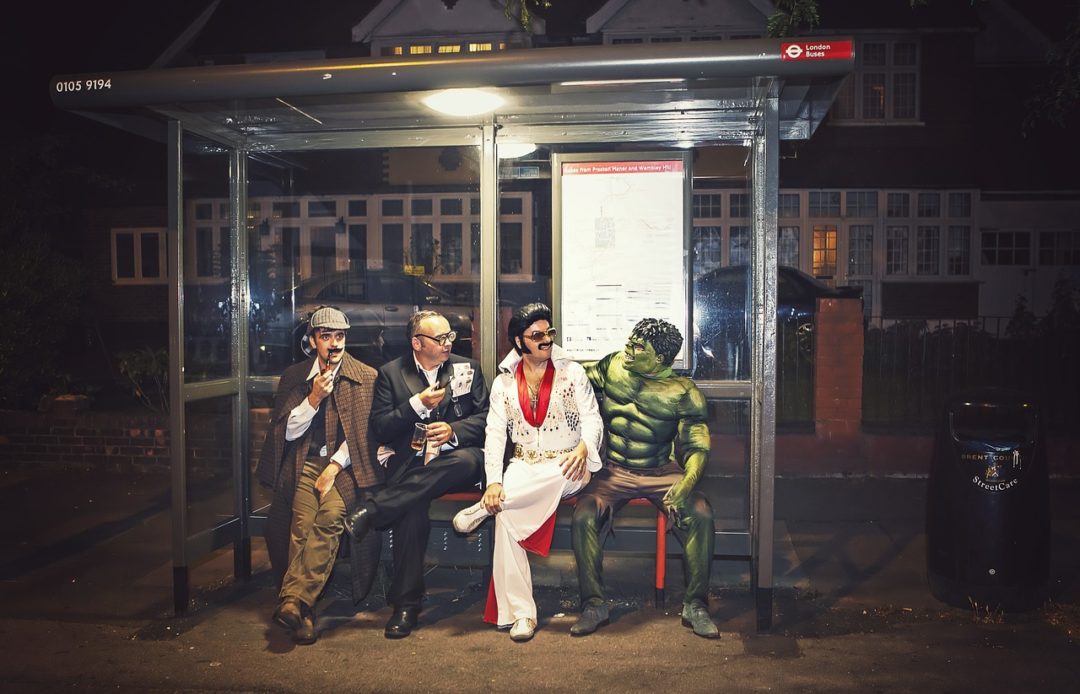Throughout history, there is plenty of evidence that dressing up has been a hugely important part of many social scenes and festivities. From masquerade balls to pagan festivals, celebrating life, wealth and religious holidays, all have been greatly enhanced by the addition of costume and role-play.
Dressing up in costume to entertain and amuse dates back as far as the Romans. Not content with orgies and gladiators, those powerful Romans also liked to don lion skins and golden beards and even Caligula himself enjoyed pretending to be someone he wasn’t.
Fast forward to the 14th Century and Charles VI of France famously entertained his court with the ‘Bal des Sauvages’ fancy-dress bash which was a big hit with the upper classes. On the downside though, enthusiastic dancers wearing costumes made of flax, were prone to catching fire when they got too close to the torches. In fact, legend has it that the King himself nearly came a cropper too, but was saved when his aunt, the Duchess of Berry hurled her enormous skirt over his head to protect him from the flames!
The Italians were also quick to get in on the dressing up game, as their elaborate and extravagant Venetian masquerade balls became an intrinsic part of the highly revered carnival seasons of the 15th Century. But, these seemingly frivolous events were often swathed in darkness too, as revelers took advantage of their covered faces to worship the darker sides of life including death, lust and decadent behavior. Masquerade balls garnered quite a lascivious reputation for themselves, and eventually they fell out of favor.

In the 1800’s, American socialite Virginia Fair Vanderbilt threw enormous fancy dress balls for well-heeled New York socialites who dressed up as real-life aristocrats, while across the pond Queen Victoria and Prince Albert hosted a costume ball for 2,000 of their closest friends, dressed as Edward III and his consort Queen Philippa of Hainault.
Those previously seedy masquerade balls took on a new lease of life in the 1800’s. High society dived into costume parties with aplomb, and affluent ladies made it their purpose to organize balls to present young girls as suitable candidates for marriage, or to celebrate public holidays and annual occasions in costume.
Due to the strict dress code decorum of the Victorian era, ladies would theme their dresses to incorporate historical figures or natural phenomena, giving them the freedom to become someone else for the evening, without baring the flesh or being frowned upon. Queen Victoria herself, had a penchant for styling her dress to look like other monarchs, as well as legends from folklore and fables.
By the 19th century, fancy dress was no longer just reserved for opulent balls and royal gatherings. Private occasions like children parties became the perfect place to show your good breeding and impressive dressmaking prowess, as mothers, fathers, nannies and guests would enjoy themed fancy dress parties up and down the country.
Fancy Dress For The Next Generation

The roaring twenties brought daring fashions, decadent dances and a freewheeling popular culture to all, and nothing was more popular than a party – in all sorts of guises. Costume parties and masked balls were back in fashion, and so was the saucy side of being hidden away in the presence of beauty.
By the onset of the World War II however, the lavish party lifestyle was dying a slow and subtle death, and it wasn’t until the 1950’s that costume parties became sought after once again. From prom nights to graduation balls, children’s parties to holiday celebrations, dressing up was back in fashion big, style.
The costumes we now consider to be fancy dress, are often simply just the forgotten fashions of days gone by.Dressing up as a hippie is a nod to the peace-loving earth-worshippers of the 1960’s, while donning platforms and hot pants is really only a throwback to the disco days of the 1970’s. No matter what walk of life, or time and place we steal our fancy dress ideas from, we are merely celebrating other cultures, other periods and time and other people who went before us.
Why We Still Love Fancy Dress

Turning op to a party dressed as mermaid, while having a conversation with a guy dressed as giant parrot is always going to be great fun. Fancy dress enables us to shelve our insecurities and inhibitions and take on a new character for the night.
Great costumes are also great talking points, and by relaxing, laughing and chatting together, partygoers of all ages will find it far easier to make a connection. Fancy dress parties are more popular now than ever before, and annual occasions like Halloween offer some of the very best themed costume events ever seen.
Another popular occasion for donning fancy dress is during a bachelor or bachelorette party. These celebrations, typically not long before the groom or bride gets married, are a great opportunity so share good times with close friends and fancy dress allows the occasion to be even more memorable. In these cases, the types of costumes chosen are often humiliating (in a fun way) and risqué but they are always amusing, as evident by the list of popular bachelor party costumes here on the Last Night of Freedom website.
Whatever you like to dress up as, and wherever you are planning to party, remember fancy dress is all about the fun!




